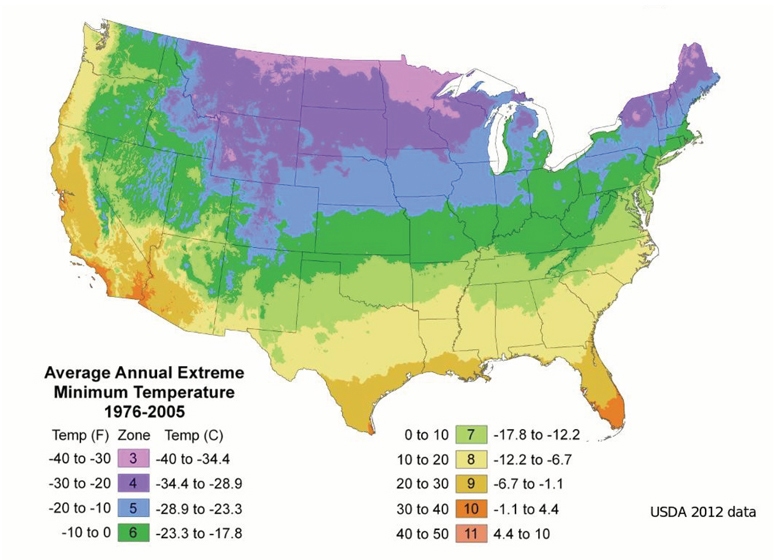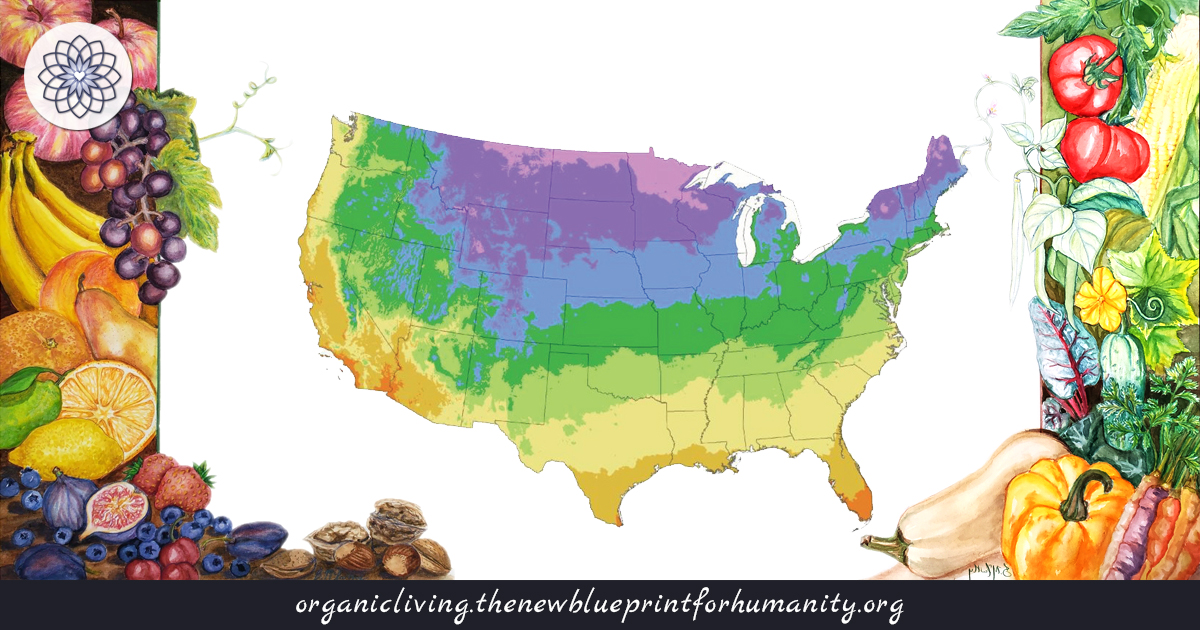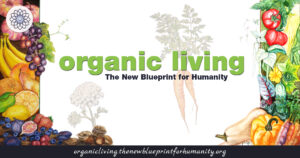USDA Plant Hardiness Zone Map
What is the USDA Hardiness Zone Map?
The US Department of Agriculture created the USDA Plant Hardiness Zone Map to provide a standard definition of climatic conditions relevant to plant growth and survival. It is used by the agriculture industry to define what plants grow best in what areas. By understanding what zone you’re located in, you can find out which plants will grow best in your area and which won’t.
What is a Planting Zone?
Planting zones tell us ultimately the temperature of the specific zone. More specifically, they tell us when the average last frost will occur where you live – and the first frost. The number of days between first and last frost is your growing season.
Why do I need to know my Planting Zone?
USDA has been tracking daily temperate data for years. This info, in the form of frost dates, is easily available for the gardener. Planting zones give you an easy way to understand when to plant. Some vegetables can be planted before the last frost, some cannot. Squash, for example, is a summer vegetable that can not tolerate frost. So, starting your garden when there is a historical risk of frost can wipe out your garden.
How do I use my Planting Zone?
First,search the map to find your Planting Zone. Once you know your planting zone, use the chart below to find your frost dates.
| Zone | Avg Last Frost | Avg First Frost | Avg Growing Days |
|---|---|---|---|
| 1 | May 25 | August 25 | 92 |
| 2 | May 15 | September 1 | 109 |
| 3 | May 15 | September 15 | 123 |
| 4 | May 15 | October 1 | 139 |
| 5 | May 1 | October 15 | 168 |
| 6 | April 15 | October 15 | 183 |
| 7 | April 1 | October 31 | 213 |
| 8 | March 15 | November 15 | 245 |
| 9 | February 15 | November 30 | 290 |
| 10-13 | No Freeze | No Freeze | 365 |
What does it tell me?
First, you know how many growing days you have which dictates what you can grow. Now, a little secret s that any vegetable will grow where you live. Everyone in the contiguous United States lives in Zone 3 or higher and has at least a 123 day growing season – enough to grow watermelons, pumpkins and butternut squash.
The other thing you know is when to plant. Many vegetables like squash, corn, cucumber and melons and don’t tolerate frost and have to be planted after the last frost date. Planting too soon will statistically result in limp, frostbitten veggies that have to be replanted.
Plant Hardiness Zones







